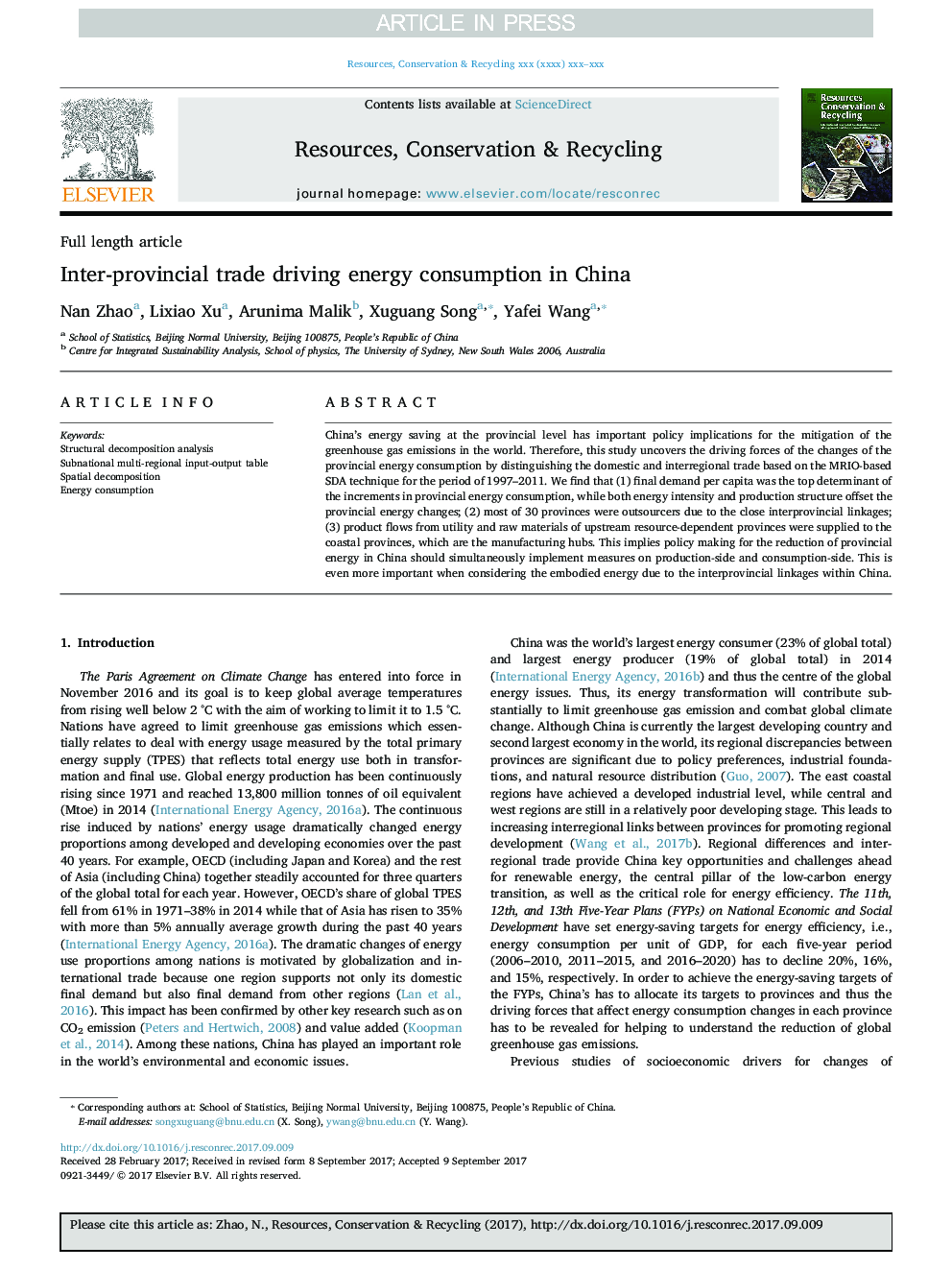| Article ID | Journal | Published Year | Pages | File Type |
|---|---|---|---|---|
| 7494251 | Resources, Conservation and Recycling | 2018 | 7 Pages |
Abstract
China's energy saving at the provincial level has important policy implications for the mitigation of the greenhouse gas emissions in the world. Therefore, this study uncovers the driving forces of the changes of the provincial energy consumption by distinguishing the domestic and interregional trade based on the MRIO-based SDA technique for the period of 1997-2011. We find that (1) final demand per capita was the top determinant of the increments in provincial energy consumption, while both energy intensity and production structure offset the provincial energy changes; (2) most of 30 provinces were outsourcers due to the close interprovincial linkages; (3) product flows from utility and raw materials of upstream resource-dependent provinces were supplied to the coastal provinces, which are the manufacturing hubs. This implies policy making for the reduction of provincial energy in China should simultaneously implement measures on production-side and consumption-side. This is even more important when considering the embodied energy due to the interprovincial linkages within China.
Related Topics
Physical Sciences and Engineering
Energy
Renewable Energy, Sustainability and the Environment
Authors
Nan Zhao, Lixiao Xu, Arunima Malik, Xuguang Song, Yafei Wang,
